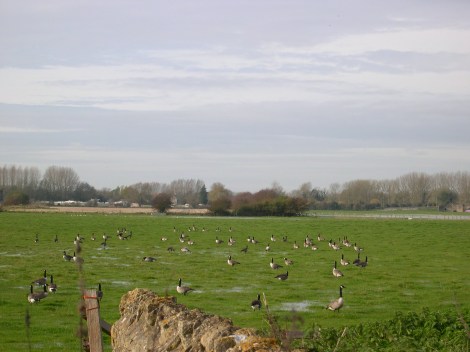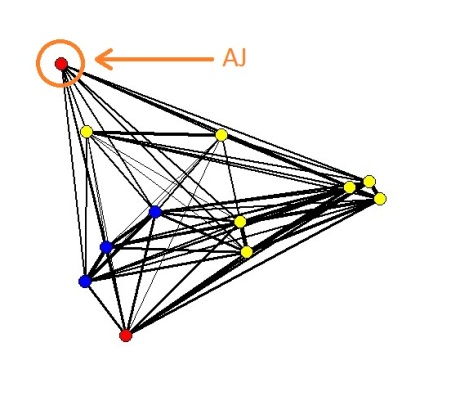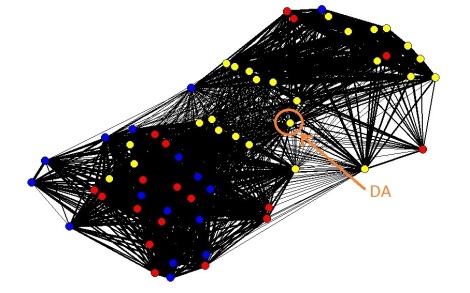Spot the goose!
They all look rather similar, do they not?
To explore the November data a little, I’ve been having a look at ego networks – networks that focus on a particular goose (hereafter called the focal goose) and then display all the geese to which it’s connected. Connections, lines between dots, mean that the two dots/geese were seen in the same place at the same time. Though I was occasionally lucky enough to catch them on their roosts in the morning, these are large birds feeding on a low-nutrition resource (grass), so in November many feed from dawn until dusk – with a little floating around on inaccessible lakes or grooming to prevent boredom occupying their bird brains. These networks display the (collared) foraging buddies of five focal geese.
In these networks, colour of node = sex (female=red, male=blue, unknown=yellow) and width of line = number of times birds were seen together.
Scientifically, why break networks down into the clusters around particular geese? It’s actually rather difficult to compare one whole network to another, particularly with wild populations. Comparing ego networks is slightly more straightforward. The constraints and factors affecting goose AA are going to be similar to those affecting bird AJ – they were collared on the same lake in the same hour on the same day in the same flock. Why then are their networks different? By using all the networks and what else we know about the geese, can we identify why AA has remained with lots of collared birds, whereas AJ associates with fewer of them?
Strictly speaking, this information (number of collared associates) is simply degree, but it is best displayed by looking at ego networks. Ego networks are also a good starting point when you want to know whether an individual is similar to its friends: e.g. do geese that display a particular behaviour tend to associate with other geese displaying the behaviour.
You can also use ego networks to identify preferred associations. Stanton and co used ego networks to identify when particular classes of dolphins within a population were hanging around together more than would be expected by chance. To read more about the dolphins of Shark Bay, go to the paper: ‘When mum’s away: a study of mother and calf ego networks during separations in wild bottlenose dolphins (Tursiops sp.)‘.





